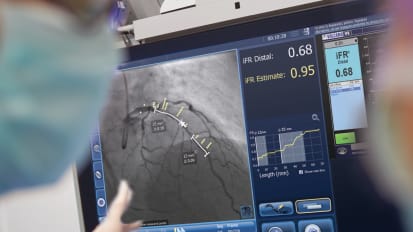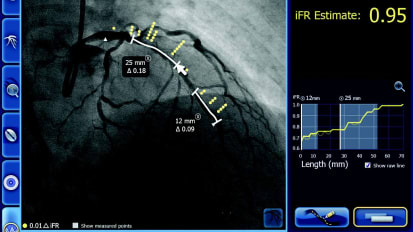Search
Showing 1 - 2 of 2 results
 Document
Document
See clearly and treat optimally with SyncVision’s iFR Co-registration
With iFR Co-registration there is no need for hyperemic drugs, no need for time consuming pullback devices and no need for guesswork Document
Document
DEFINE PCI Unseen focal lesions cause residual ischemia
1 in 4 patients with angiographically successful PCI left the cath lab with residual ischemia.Of the patients with residual ischemia, 81.6% were caused by an untreated angiographically inapparent physiologically focal stenosis (? 15 mm).
